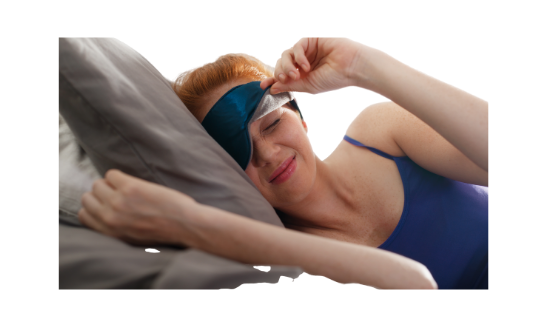Other Treatment Options

Medical Therapies
Depending on the nature of your Sleep Disordered Breathing (SDB), treatment may include a medicine designed to enhance your upper airway muscular activity during sleep.
Recent evidence supports the use of a range of medications that affect the neurochemical control of upper airway muscle tone during rapid eye movement (REM) sleep and non-REM sleep. These medications are often employed together with other non-medical treatments for SDB.
Customized Sleep Hygiene Programs
Sleep hygiene is important behavior you can practice to promote better sleep. While all of the other treatments will help your specific symptoms and diagnosis if you combine that with an excellent sleep hygiene routine, you will be more likely to achieve optimal results.
“Sleep hygiene are important behaviors you can practice to promote better sleep.”
Maintain a regular sleep routine
- Go to bed at the same time. Wake up at the same time. Ideally, your schedule will remain the same (+/- 20 minutes) every night of the week.
- Pet-Friendly Tips for your home to keep up with your progress!
Avoid naps if possible.
- Naps decrease the ‘Sleep Debt’ that is so necessary for easy sleep onset.
- Each of us needs a certain amount of sleep per 24-hour period. We need that amount, and we don’t need more than that.
- When we take naps, it decreases the amount of sleep that we need the next night – which may cause sleep fragmentation and difficulty initiating sleep and may lead to insomnia.
Don’t stay in bed awake for more than 5-10 minutes.
- If you find your mind racing, or worrying about not being able to sleep during the middle of the night, get out of bed, and sit in a chair in the dark. Do your mind racing in the chair until you are sleepy, then return to bed. No TV or internet during these periods! That will just stimulate you more than desired.
- If this happens several times during the night, that is OK. Just maintain your regular wake time, and try to avoid naps.

Don’t watch TV or read in bed.
- When you watch TV or read in bed, you associate the bed with wakefulness.
- The bed is reserved for two things – sleep and sex.
Do not drink caffeine inappropriately
- The effects of caffeine may last for several hours after ingestion. Caffeine can fragment sleep, and cause difficulty initiating sleep. If you drink caffeine, use it only before noon.
- Remember that soda and tea contain caffeine as well.
Avoid inappropriate substances that interfere with sleep
- Cigarettes, alcohol, and over-the-counter medications may cause fragmented sleep.
Exercise regularly
- Exercise before 2 pm every day. Exercise promotes continuous sleep.
- Avoid rigorous exercise before bedtime. Rigorous exercise circulates endorphins into the body which may cause difficulty initiating sleep.
Have a quiet, comfortable bedroom
- Set your bedroom thermostat at a comfortable temperature. Generally, a little cooler is better than a little warmer.
- Turn off the TV and other extraneous noise that may disrupt sleep. Background ‘white noise’ like a fan is OK.
- If your pets awaken you, keep them outside the bedroom.
- Your bedroom should be dark. Turn off bright lights.
If you are a ‘clock watcher’ at night, hide the clock.
Have a comfortable pre-bedtime routine
- A warm bath, shower
- Meditation, or quiet time
Surgical Therapy
Surgical procedures on upper airway soft tissue structures often eliminate Sleep Disordered Breathing (SDB) in children (tonsils and adenoids). Recent meta-analyses of the literature conclude that surgical removal of the uvula and associated soft tissue structures in adults provides benefit in snoring for up to 50% of patients, but is not considered an effective therapy for Obstructive Sleep Apnea (OSA).
“Surgical procedures on upper airway soft tissue structures often eliminate Sleep Disordered Breathing (SDB) in children (tonsils and adenoids).”
For patients with specific, boney facial and jaw deficits (such as a short jaw), there are also effective surgical therapies.
Positioning and Weight Loss Therapies
In many cases, sleeping on your back increases Sleep Disordered Breathing (SDB). Using a combination of soft wedges, sleepwear, and head positioning, supine SDB can be effectively managed in many patients. Most people consider weight gain as the cause of SDB. Actually, weight gain can increase the pressures placed on the airway which may increase the severity of SDB.
“In many cases, sleeping on your back increases Sleep Disordered Breathing (SDB).”
Weight loss is an effective strategy to reduce SDB and is often employed with other more immediate therapies such as PAP or Oral Appliance Therapy.
Cognitive Behavioral Therapy
These methods teach patients how to change actions or thoughts that impede the natural sleep process. Patients learn how to regain control of their sleep by developing sleep-promoting behaviors and thoughts.

